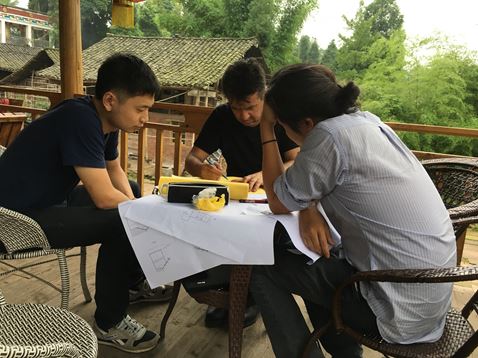Abstract
A collaborative research project on environmental, economic, and socially sustainable design, Miaoxia Village – building a sustainable community (RAE2020) has helped one hollowed-out, left behind rural community in China achieve greater community cohesion and resilience. Working closely with the residents, the project helped villagers learn new skills, diversify income sources, and self-organise through co-designing and constructing the Community Kitchen and Guesthouse. Between 2015 and 2019, these two projects generated over HK$96K in new income, supporting community education and healthcare for all 150 villagers. The project’s success has led to further rural community revitalisation projects in 9 other villages, bringing social and economic benefits to over 2,000 villagers.


Miaoxia Village project involved collaboration between the disciplines of Social Sciences and Design. The combined social design methodology used Action Research to create new ‘software’ (social enterprises, new community groups) and Participatory Design to create new ‘hardware’ (new buildings, improved infrastructure) through extensive and protracted engagement with the rural villagers. The research aligned social and design change towards sustainable development and increased resilience in the community. The collaborative approaches positively initiated long-term rural development, generating resources and capacities for social innovation. In-depth engagement with villagers, involving co-design / participatory design processes, led to the implementation of 5 new community facilities and amenities, as well as villager-run social enterprises to manage and benefit from these. Funded by Keswick Foundation and School of Design, the research was conducted in two separate stages: 2015-2017, 2017-2019.

Two cooperative social enterprises were established to run the new community kitchen and guesthouse. Villagers were trained to help establish these operations, acquiring new skills such as kitchen operation, landscaping, and enterprise development. The projects increased villagers’ confidence and pride in their cultural heritage, capabilities, and skills. The established social enterprises provided direct employment for 12 villagers. By catering to over 2,200 people and attracting 600 overnight visitors between November 2015 and April 2019, these villagers have generated a combined income of over HK$96K. The revenue generated by hospitality was partly invested in public services, healthcare, maintenance, poverty services, and other developments such as education and training. Increased community resilience was evident in villagers themselves initiating further improvements, such as creating revenue-generating cultural tours and craft workshops.





